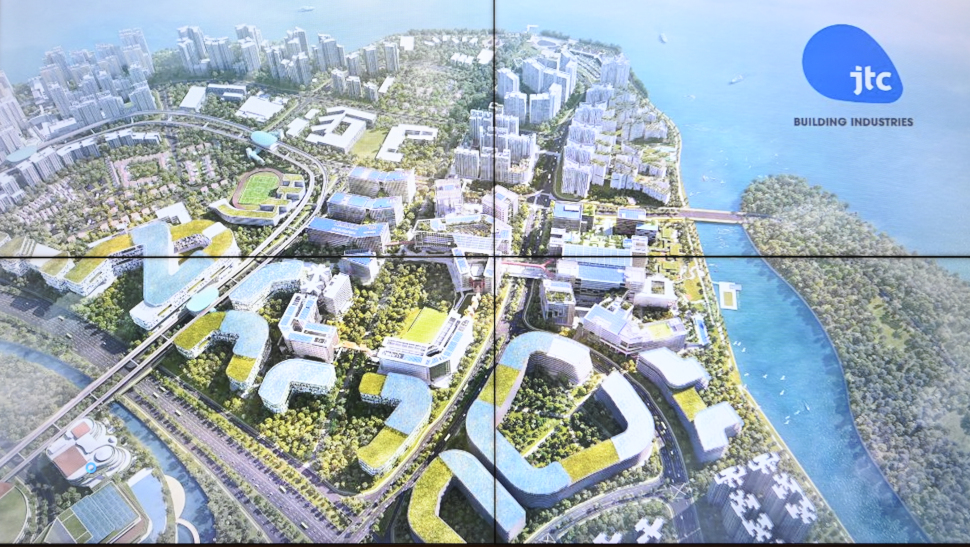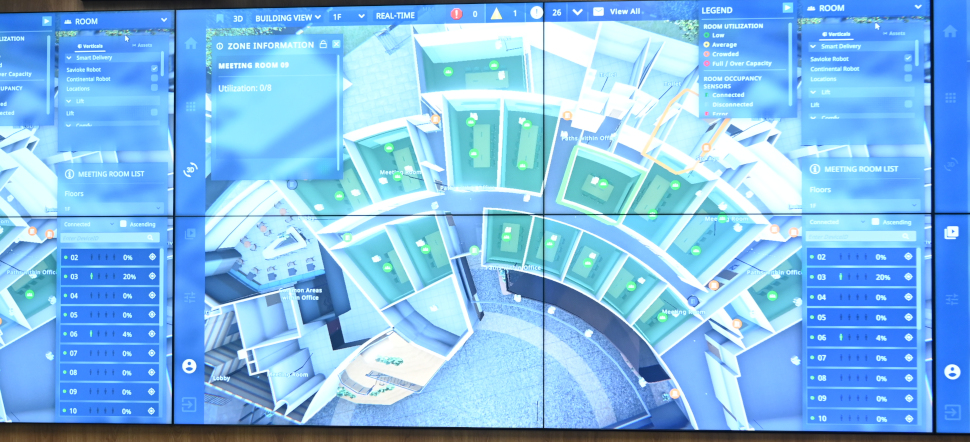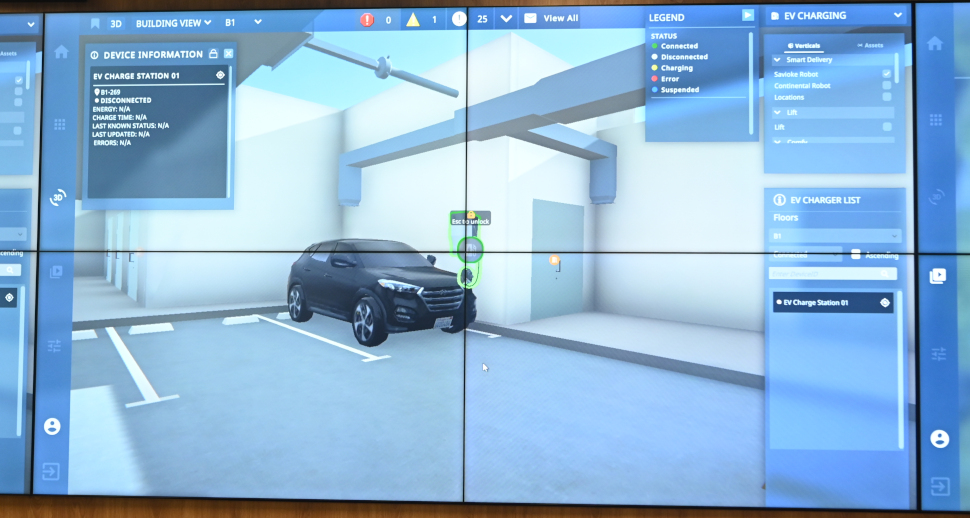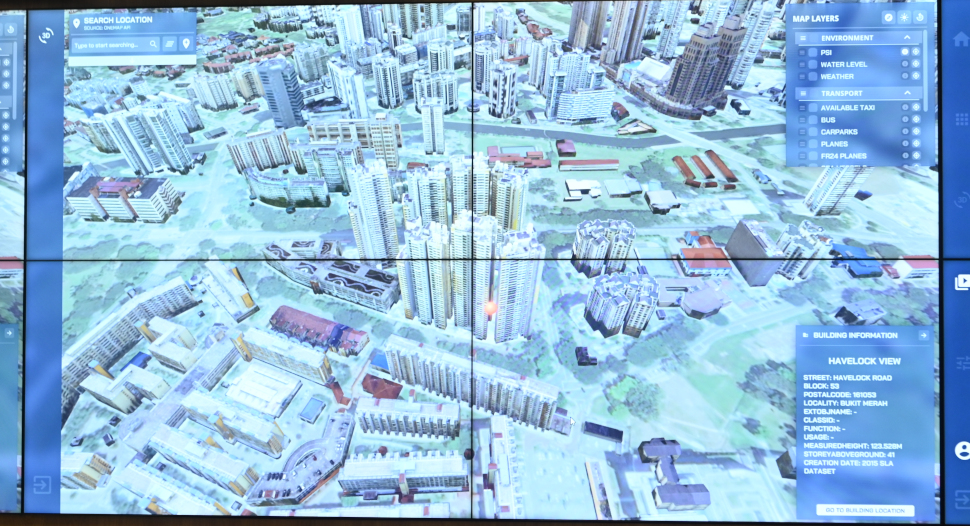With most of us choosing to work from home for at least part of the time, the need for physical offices is perhaps somewhat on the wane.
Many businesses (especially those with high rents to pay or leases to run) are looking to address this drop off with perks such as free meals, flexible hours or other perks, but could the answer to a better workplace actually be better technology?
Smart buildings (and smart cities) are nothing new, but TechRadar Pro was invited to Singapore to see the potential next step in making office buildings more intelligent than ever before.
Going smart
From the outside, JTC Summit may look much like any other office block. Set in Punggol district towards the west of Singapore, its gleaming glass windows and bright, airy lobby make it a welcoming 24-story presence that bustles with workers going about their daily tasks. However under the surface, a network of around 60,000 sensors power a hive of activity that make the building almost the equivalent of a living being.
As an island nation, space is limited in Singapore, with the government decentralizing its central business district (CBD) into other areas such as the Punggol Digital District that JTC Summit is suitated in. The nearby Singapore Institute of Technology, with its 12,000 students, makes Punggol an appealing site for the next generation of technology, particularly when testing out the potential city of tomorrow.

Making such a large area "smart" is no easy task, so Govtech, the development arm of the Singaporean government, to develop a new framework that would be able to bring together a range of technology from smart energy to building management and even robot delivery services into one platform.
This is the Open Digital Platform, which acts as middleware to combine a wide range of verticals alongside infrastructure pillars from network to compute and storage, sharing data across multiple systems to offer everything a smart office building could want via its Smart District OS.
At JTC Summit, the building owners work alongside a complete digital twin of the building, recreated meticulously in the virtual world, to allow them to make decisions that range from boosting efficiency to just keeping the right lights on.
Smart District OS can monitor almost every connected part of the building, giving details on items such as entry gates, lifts, and escalators to spot if there have been any breakdowns or malfunctions or outages that need attention.
The movement of these items can be viewed in real-time, meaning managers can spot if a lift is stuck between floors, but also allowing remote control, so that entry gates can be unlocked to allow access to delivery people, or escalators shut down at night time to conserve energy.

The reach of Smart District OS also extends to the rooms of the building, all of which are similarly equipped with smart sensors that allow maximum customization. If CCTV feeds detect that a meeting room is too crowded, or outside weather data shows an increase in temperature, the air conditioning can be turned up to ensure attendees aren't overheated, and usage of rooms can be tracked over time to see if certain meetings are worth moving to smaller venues or even cancelling altogehter.
Down in the car parks, EV chargers have been installed to address the growing demand for such vehicles, however they can pose certain fire risks. Again, though, CCTV camera feeds can spot any tell-tale puffs of smoke, and cut the charger's power and raise the alarm before the fire has a chance to take hold.

JTC Summit is also populated with a number of adorable robots, who are able to carry out a variety of tasks, from package delivery, spotting maintenance alert, or just patrolling the halls to spot any potential issues. These robots can be tracked in real-time to make sure they don't get lost or stuck, and can be redirected or halted if a different task or an emergency arises.
At our visit to JTC Summit, James Tan, Director, Sensors and IoT, GovTech, notes that the eventual plan is to roll out Smart District OS across the whole of Punggol Digital District, an area of around 50 hectares, giving government, business and citizen alike a much smarter way to live.
Although still largely in the trial stage, Govtech aims to roll out ODP and Smart District OS across Punggol around 2025, and it's clear the body has high hopes for the platform.
Along with the cost savings due to reduced maintenance and manpower costs, Tan notes that it can also help enhance productivity and save resources, all the while encouraging business and government alike to work smarter. The Punggol rollout alone hopes to create around 28,000 jobs, and in a city as dynamic as Singapore, this could only be the beginning.
In control
During our visit, Tan showed off a range of demos showcasing the mind-boggling array of information layers that the system is equipped with, starting with live bus arrival times, the number of empty car parking spaces on certain streets, and the tracking of taxis across the island - namely, which ones are free, for easy hailing.
Using data shared by other government agencies, the system can also track flights coming in to land at the island's Changi airport, and has data on the hundreds of ships waiting to enter Singapore's mega-harbors, information that could be essential for police and security forces.
At an environmental level, we're shown a demo of how Smart District OS can track water levels in the city's drains and overflow channels in near real-time, which could help monitor for flash floods during the rany season, or even spotting suspect discharges from nearby factories.
These could all prove to be extremely useful in the real world, but Tan adds that one extra advantage of having the digital twin is that Govtech can run all manner of simulations to prepare for any eventually, from plotting traffic patterns to working out where trees could be planted to help build a shady bus stop on a new street.

Overall, it seems that JTC Summit and Punggol Digital District may only be the beginning, and that if Govtech's dreams come to fruition, your next office building might actually be more of a smart and plesant place to work.
"Nobody else is doing (what we do) at such a large scale just yet," says Tan, "and "we want our estate to be a leading light."
from TechRadar - All the latest technology news https://ift.tt/pLDx1f4
No comments:
Post a Comment